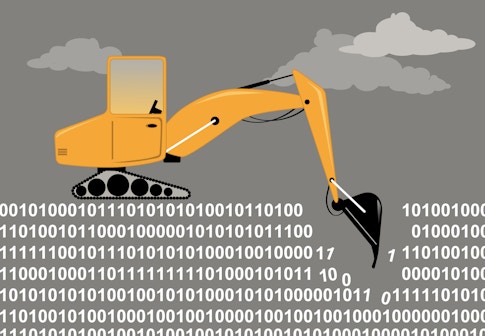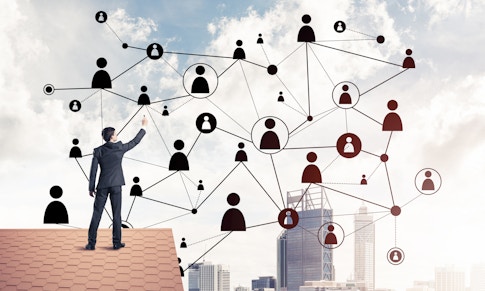
Practicing Neuroscience During a Pandemic
March brought much of life to a grinding halt, with universities among the first wave of shutdowns. In addition to doing what the rest of us have had to do — stocking up on supplies, learning to home-school children, and converting work and courses to online format — many researchers faced the unprecedented task of shuttering their labs. They had to halt experiments that in some cases involved years of effort, choose which essential resources to try to maintain, and figure out how to remotely keep tabs on trainees’ health and well-being.
As the dust begins to settle and the world adjusts to life in quarantine, neuroscientists are starting to think about how best to proceed in the absence of new experiments and in-person exchanges.
Accepting loss of productivity is an important first step, but one that can be challenging in the hyper-competitive world of scientific research. “I think a lot of people are carrying guilt that they aren’t productive even though the world is shutting down,” says Berk Gerçek, a graduate student at the University of Geneva, who was fortunate to be visiting family in Texas as international travel came to a standstill. “This isn’t the time to worry about productivity. It’s the time to worry about your family and loved ones, and if you can be productive, be productive.”
“Especially for early-career researchers and, even more strongly, those with small children at home, the lockdown, uncertainties, worries about our loved ones will impact productivity and perhaps shift their research focus,” says Anne Urai, a postdoctoral researcher at Cold Spring Harbor Laboratory. “How we will deal with this as an academic community, and in what state we’ll be when things return to ‘normal,’ is anyone’s guess at the moment.”
There may be an upside to seeing their experiments go dormant, some researchers say — the opportunity to pause and reflect. “When data is being collected, it’s easy to just keep truckin’ and not discuss as a group where we’re headed,” says Brent Doiron, a neuroscientist at the University of Pittsburgh and an investigator with the Simons Collaboration on the Global Brain. “Now is a good opportunity to think as a group about the questions we really want to ask when the wheels start spinning again.”
Konrad Kording, a neuroscientist at the University of Pennsylvania, agrees. “Neuroscience sometimes feels like a rat race, where experimentalists try to bring out one paper after another and don’t have much time to stop and think about the big picture,” he says. “In some sense, it’s an opportunity for all of us to think about where their field is going and what future experiments should look like.”

Digging Deeper Into Data
Being blocked from the lab is inspiring some researchers to think more deeply about the data they already have. “Although nobody wanted it to go this way, sometimes being forced to stop and look at what you have is actually good for progress,” says Larry Abbott, a theoretical neuroscientist at Columbia University and an SCGB principal investigator. “If we could, we would undoubtedly keep on doing more whole-fly-brain imaging experiments, but now being forced to look hard at the data we do have has actually been quite instructive.”
Evan Schaffer, an SCGB fellow at Columbia University who collaborates with Abbott, was fortunate to have most of the data he needed for his project on how hunger and arousal states are represented throughout the fruit fly brain. With the lab shut down, he’s figuring out how to manage without the rest of the data. “The field is already moving in the direction of working with single-trial data, but this requires more clever analyses,” Schaffer says. “The lab shut down is pushing us further in that direction.”
The longer the shutdown lasts, the more creative researchers will need to be. “If this stretches on for months, or if it becomes really uncertain when things will open up again, it will be different,” says Adam Calhoun, an SCGB fellow at Princeton University. “I think at that point there will be people who want to finish up papers with a new analysis or interesting model.” Calhoun, who is working on a model of fruit fly behavior, says that if the shutdowns persist, his group will compare their model with existing published data in lieu of collecting their own.
Lisa Giocomo, an SCGB PI at Stanford University, says her lab has come up with short-term solutions, such as pairing trainees who have lots of data with those who don’t. “But if lab activity is still shut down in the summer, we’ll have to come up with long-term solutions,” she says. “Some things we’ve discussed are leveraging our large datasets to write up some more focused papers — the first two papers that came from my lab actually used published datasets, so there are plenty of questions to ask with the data we already have — or to collaborate more on the computational front to either ask theoretical questions or to guide future experimental questions.”
Some researchers are using the time to explore data standardization and data-sharing tools. Before the shutdown, Manuel Schottdorf, a postdoc in SCGB director David Tank’s lab at Princeton, was working on data infrastructure for a large inter-lab collaboration called BrainCogs. Now he’s spending more time on that effort, as well as analyzing data and thinking about next steps for his experiments. For those who have time, he recommends checking out tutorials for Neurodata Without Borders (NWB), a platform for standardizing how neuroscience data are stored, and DataJoint, a tool for creating and managing scientific pipelines. (For more on data sharing, see our four-part series. Access tutorials at Neurodata Without Borders and DataJoint.)
Loren Frank, an SCGB PI at the University of California, San Francisco, will focus some of his lab’s efforts on building a data-sharing and analysis tool that will link DataJoint to NWB. “The goal is to allow users to easily search through the data and create analysis pipelines in DataJoint while storing the raw and processed data in NWB to ensure that the data is easy to understand and can be loaded as needed, something that is critical for large datasets,” he says. “My hope is that it might provide a path for many labs to use a similar system if they can start by getting their raw data into NWB format.”
DataJoint is working with different groups, including the International Brain Lab, an international collaboration among 22 neuroscience groups, to develop data pipelines that span data acquisition, analysis and visualization. With experiments on hold, some IBL researchers have shifted their focus to evaluating and improving their pipelines, assessing what factors contribute to higher-quality data collection. “Despite the challenges, it’s been kind of exciting to see how people can take advantage of the resources they already have,” says Edgar Walker, co-founder of DataJoint Neuro. “I think this will help them when data acquisition resumes.”
For example, IBL experiments use the Neuropixels probe, which records from hundreds of neurons simultaneously and produces complex datasets. To identify electrical signals from individual neurons, researchers apply automated spike-sorting algorithms. These work well in the short term but can falter over time if the probe shifts its location. Researchers are now figuring out how to automatically assess recording stability. “This takes time but really benefits from people who can look at the data and come up with different ways the processing can be done,” Walker says. “That is something we have a window of opportunity to do right now.”

Strengthening Partnerships
The inability to collect new data could also create space to deepen interactions between theorists and experimentalists. “People may have no choice but to exchange ideas more, because generating ideas is the one thing everyone can still do right now,” Schaffer says. “I think exchanging ideas, not necessarily to drive theory faster, but to let the good ideas bubble to the surface, may be the clearest benefit.”
Doiron says his most productive collaborations with experimentalists involved significant time investment on both sides, which can be difficult to fit in when experiments are running at full steam. “To have a long-lasting, fruitful collaboration, there is a back-and-forth that really has to be done,” he says. Experimentalists need to explain the core questions they are trying to answer, as well as acceptable assumptions and the level of confidence tied to those assumptions, and theorists need to lay out their methods, such as reductionist or detail-oriented approaches, he says. Taking the time to do this can be difficult under normal circumstances, but that calculus may change when labs are shuttered.
Doiron notes that writing a review with someone can help launch a partnership. “One good way to start or rekindle a relationship is to write a perspective piece that forces you onto the same page,” he says. “A manuscript doesn’t require the genesis of new data, and you’re still producing work of value to the community.”
The IBL is helping to foster these types of partnerships with a program pairing an experimentalist and a theorist based on their interests. “I think this break will be an opportunity to make it work,” says Alex Pouget, a theoretical neuroscientist at the University of Geneva and an IBL PI. “I am sensing that there is a much stronger incentive to start talking in a pairwise fashion, and a lot of that can be done online.”
Gerçek, a graduate student in Pouget’s lab, virtually meets once a week or two with his partner, Guido Meijer, a postdoctoral fellow in the Champalimaud Neuroscience Program in Lisbon. “Both sides get to think about what’s going on in the other side of the project in an informal way,” Gerçek says.
One of the biggest adjustments for everyone has been learning to communicate entirely virtually. The IBL’s 21 member labs have extensive experience with this. The project, now in its second year, involves both theorists and experimentalists who regularly communicate via large virtual group meetings. Pouget recommends designating a moderator for large meetings to guide the discussion and keep people on track. Moderators can also reengage people who are zoning out. To control the flow of questions in very large meetings, Pouget suggests using the virtual hand-raise tool. “When you have 20 to 30 people on Zoom who want to talk at same time, you have to be more structured than in an in-person meeting,” he says.
It’s impossible to say how long this situation will last or what the future will bring. But researchers may look back on the pandemic-induced pause as a time when they could meditate on the field’s present and future. “It is a time to go back to theory, analysis and just plain thinking, so that when the experiments come back, we will be able to make the most of them,” Abbott says. “Hopefully, this will not only be a time of extreme frustration, but also a chance to remember how precious the experiments and the experimental data are, and to lay the groundwork for making the most of what the future will bring.”
An evolving list of online resources in computational and systems neuroscience, including tutorials, online courses, online seminar series and virtual conferences is available here.


